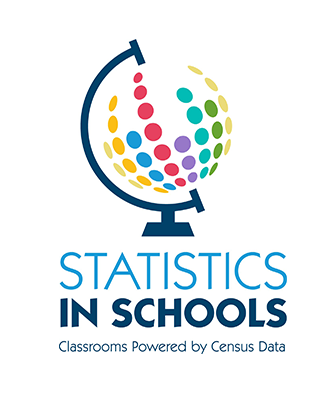Teachers' Guide to Data Access Tools for Students

The U.S. Census Bureau and its Statistics in Schools program offer a number of tools that students can use to access data. Students can find city- or state-specific information about their birthplace, current place of residence, or ideal future hometown, for example. Using these tools, students and teachers can see data on housing, population, age, sex, race, ethnicity, geographic location, and much more. To see a complete list of data access tools offered by the Census Bureau, visit www.census.gov/data/data-tools.html. To download student activities that use data access tools, visit https://www.census.gov/schools/resources/data-tools/teach-with-data-tools.html.
Best for elementary and middle school
State Facts for Students is a fun way for 8-to-14
year-olds to learn about their state and to examine data about kids their age. This tool has a simple interface that displays a variety of current and historic facts selected to appeal to young students.
Teachers can find math, geography, and English activities that incorporate the use of this tool on the SIS website at www.census.gov/schools.
With This Tool, Students Can:
• Discover information about their state, including data on population, geography, business, and history.
• Examine data about students their age and learn fun facts, such as the number of ice cream stores in a state.
• Compare data about their state with other states, the District of Columbia, and United States territories.
QuickFacts is best for sixth grade and up
QuickFacts is an easy-to-use application that displays tables, maps, and charts of frequently requested statistics such as age, sex, race and ethnicity, and education. Facts are available for the nation, all 50 states, the District of Columbia and Puerto Rico, and all U.S. counties. Also included are cities and towns with populations of 5,000 or greater.
With This Tool, Students Can:
• Compare data for different geographies. They could, for example, compare the number of people who have a bachelor’s degree or higher in a large urban city like Chicago with the number in a small rural city like Sidney, Montana.
• See data in various formats, such as tables, maps, graphs, and dashboards.
Best for high school
Data.census.gov provides data on population, race, age, education, income, and businesses for the largest and smallest geographic entities including ZIP codes and neighborhoods. Data are available from the American Community Survey, Economic Census, Decennial Census, and other economic surveys and are easily accessible through a single-search bar or through drop-down filters.
With This Tool, Students Can:
• Narrow a search with hundreds of detailed categories, such as languages spoken at home, the number of grandparents living with children under the age of 18, vacant homes, or people with disabilities.
• Access data visualization profiles for states, counties, or cities and towns and see an overview of the area. Also included are the four top key statistics—population, median household income, poverty rates and employment rates—along with other data charts and maps for the selected area.
• Customize charts and maps that can be shared or exported.
Best for high school
This tool offers an easy way to access and use key demographic and economic data at the county, city, ZIP code, and tract levels. These data help small business owners plan for opening a new location or expanding an existing one, for example.
For a more advanced version of the tool, teachers and students can use the Regional Analyst Edition, which allows the user to define a region made up of two or more counties and see the data for that area.
With This Tool, Students Can:
• Select a type of business and potential business location with easy-to-use menus.
• Use an interactive map to explore the selected area for business opportunities and compare it to neighboring areas.
• Explore, download, and print county- and city-level business reports (including trend charts).





